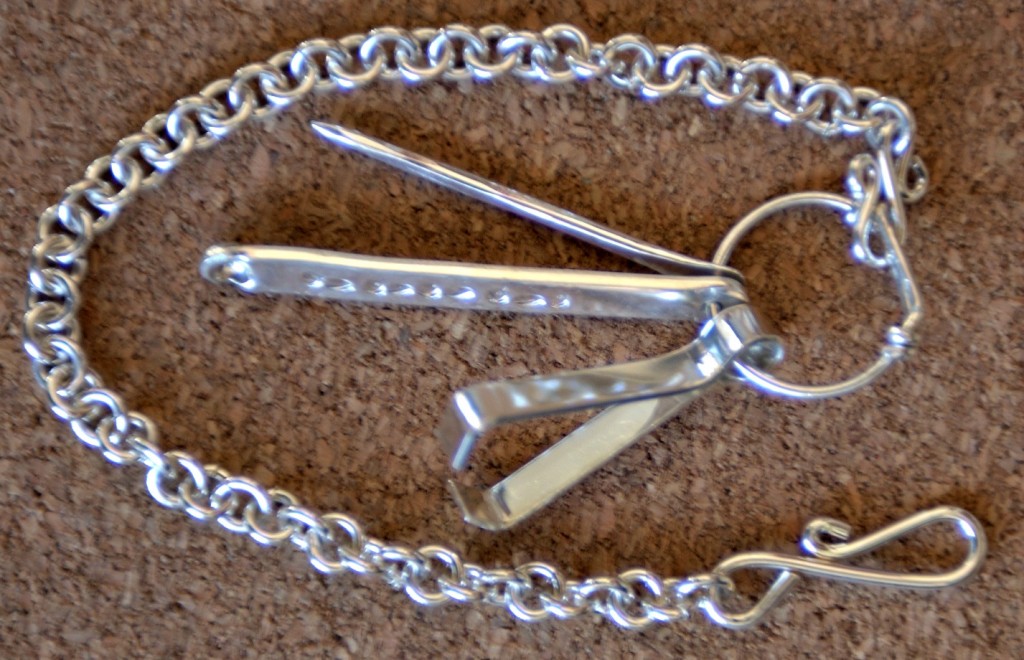 Toiletry sets were popularized by the Romans throughout their empire. They became an important part of personal attire for women, and remained popular through the Victorian Age. Pre-1066 women’s sets usually consisted of a pair of tweezers, an ear-spoon, and a toothpick/nail cleaner, or just an ear-spoon and a toothpick/nail cleaner. Some sets also included a small brush – possibly for the application of cosmetics. Late in the Roman Era specialized, and essentially unusable forms of the toiletry set developed that were only intended as a sign of Romanization – the Toiletry Brooch. This was basically a decorative brooch, often enameled, with a bar that had tiny representations of the various toiletry items hanging from it.
Toiletry sets were popularized by the Romans throughout their empire. They became an important part of personal attire for women, and remained popular through the Victorian Age. Pre-1066 women’s sets usually consisted of a pair of tweezers, an ear-spoon, and a toothpick/nail cleaner, or just an ear-spoon and a toothpick/nail cleaner. Some sets also included a small brush – possibly for the application of cosmetics. Late in the Roman Era specialized, and essentially unusable forms of the toiletry set developed that were only intended as a sign of Romanization – the Toiletry Brooch. This was basically a decorative brooch, often enameled, with a bar that had tiny representations of the various toiletry items hanging from it.
Combination tools appear during the 1500 and 1600’s. They included several forms of tweezer-ear-spoons, and toothpick-ear-spoons. Very inexpensive, poor quality tools, made of wire also appeared at this time and were widely found in areas like London. Individual toiletry items such as a pair of tweezers or a lone ear-spoon are also found, and were probably stored in a small pouch,
Most toiletry sets were made of a copper alloy (bronze), but examples of silver and gold sets do exist.
This form of silver toiletry set on a silver chain is appropriate for both Viking and Anglo-Saxon women.
Men commonly carried a pair of tweezers, and sometimes an ear-spoon, in a pouch.
Viking women usually hung their toiletry sets from their brooches, on a chain or string. Anglo Saxon women hung their toiletry sets from their belts. Less commonly, both groups kept their toiletry sets in a pouch, which could be suspended from a belt.
Late 1500’s toiletry sets often included things like bodkins, for lacing clothing, and scissors, for sewing. They were often suspended from elaborate Chatelaines that hung from a belt.
I hope that this brief summary helps you have a better understanding of the nature and origins of toiletry sets.


